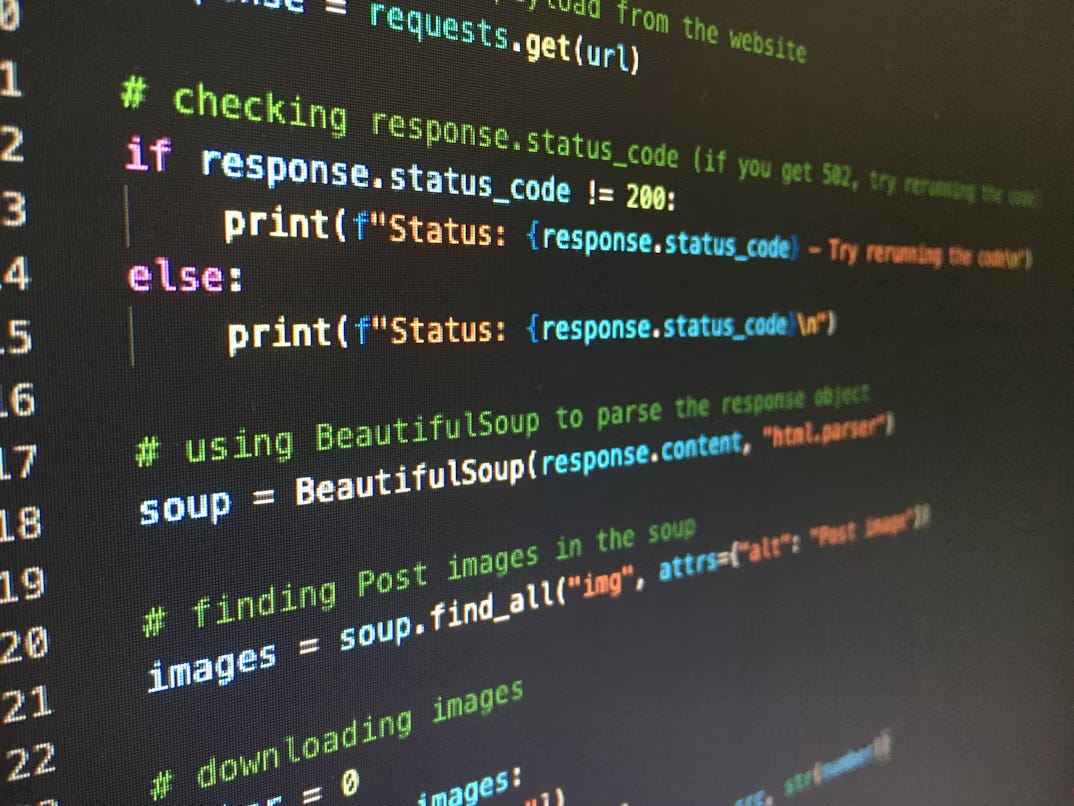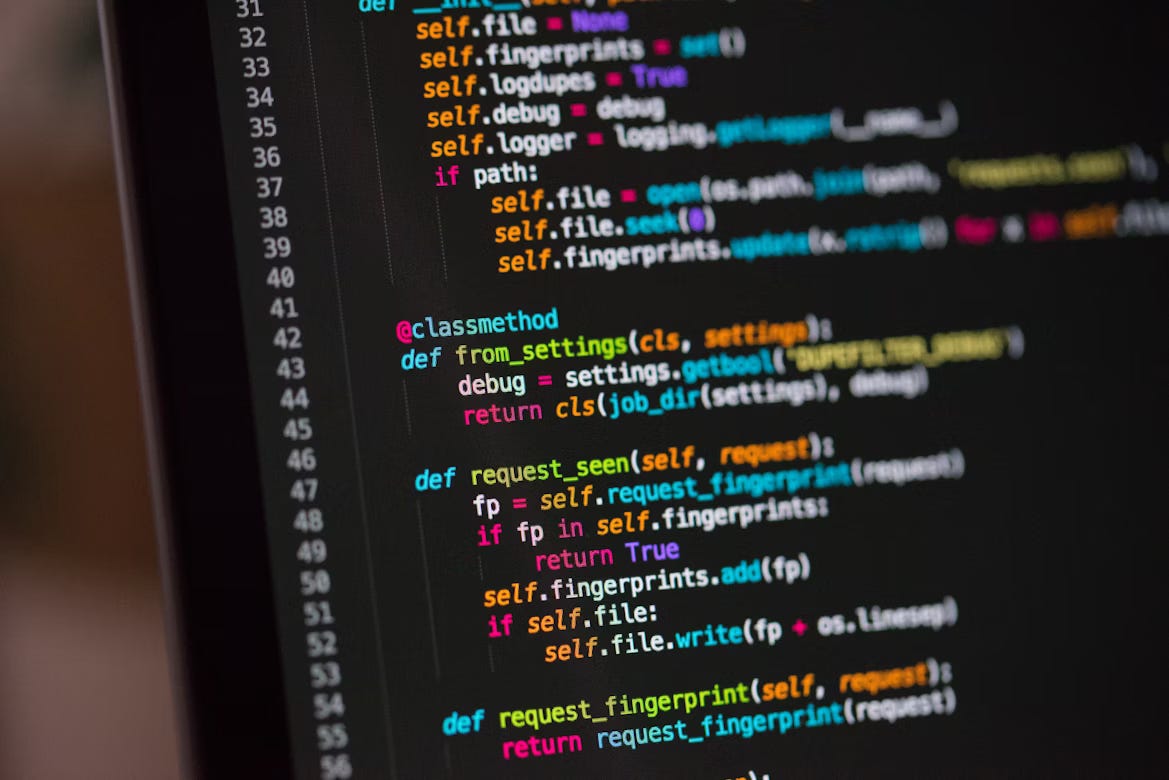Core Python Concepts
The class introduced three new Python data types:
None: A special value representing a null or empty state. It's always spelled with a capital "N".Booleans (
TrueandFalse): A data type that can only hold one of two values. These are always spelled with a capital "T" and "F" respectively.
Conditionals: Making Decisions in Code 🧠
Conditionals are logical structures that allow a program to make decisions. The core concept is an if statement, which checks if a condition is true. If the condition is met, the indented code block that follows is executed.
Syntax: An
ifstatement must end with a colon (:). The code that belongs to theifblock must be indented, typically with a tab.else: An optionalelsestatement can be used to provide an alternative block of code to run if theifcondition is false.Comparison Operators: The class reviewed operators for comparing values, including
==(equal to),!=(not equal to),in(checks for a substring), and numerical operators like<and>.Assignment vs. Comparison: A crucial distinction was made between the single equals sign
=(used for assignment) and the double equals sign==(used for comparison).
In-Class Exercise: The Alarm Clock ⏰
Students worked on a coding exercise to calculate the final time after snoozing an alarm. This problem demonstrated the importance of separating numbers from strings and handling rollover logic (e.g., when minutes exceed 59, they need to add to the hour). The exercise also highlighted the current limitation of not yet knowing how to use loops, which would simplify the repetitive action of snoozing.
The Drunkard's Walk Simulation
The next major assignment will involve a baseball simulation based on the book The Drunkard's Walk. The goal is to replicate a statistical experiment using Python to count and simulate events, rather than using complex probability math. The exercise emphasizes the digital humanities technique of reproducing results to verify them.
Reflection:
Learning a new skill, especially something as precise as coding, can be a frustrating experience. This week, I ran into a peculiar problem that highlighted just how fickle technology can be.
I was in class, ready to tackle the day's exercises, when my laptop decided to be uncooperative. The simple commands that worked flawlessly on my home computer refused to run on the classroom machine. I was stumped. My professor was stumped. We were in a digital stalemate.
I spent a significant portion of the class in a cycle of reinstallation and folder switching, hoping something would click into place. I reinstalled Anaconda three times. Each time, I was met with the same result: nothing. It was a classic "computer says no" scenario, and it felt like I was debugging an invisible problem.
Finally, after much trial and error, we found the culprit. It wasn't the folders or the commands; it was a deeper issue with the software itself. For some reason, Anaconda hadn't installed Python correctly. The fix was a manual installation of Python, bypassing the initial error.
It was a small victory, but a significant one. This experience was a powerful lesson in problem-solving. It taught me that sometimes the issue isn't with your approach or your understanding of the code, but with the tools themselves. It reinforced the importance of persistence and the value of a logical, step-by-step approach to debugging. The frustration of the situation was a reminder that learning to code isn't just about syntax and commands—it's about learning to navigate the unpredictable, and sometimes baffling, world of technology.
What's Next?
The next class will cover loops for performing repetitive tasks, which will make future coding problems like the alarm clock exercise much more efficient. Future topics also include data structures and methods for extracting numerical data from strings.




